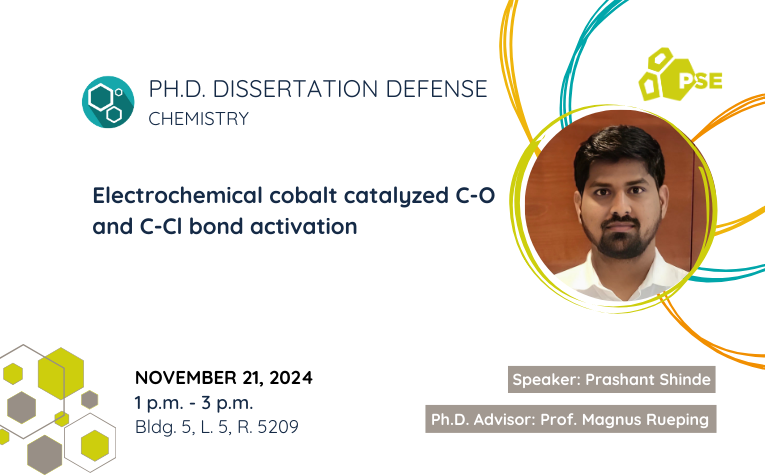Nov 2024

Abstract
Electro-organic chemistry has significant potential for widespread application in chemical synthesis but remains largely underutilized. To help advance this promising area of research, this PhD project focused on developing novel cobalt-catalyzed electrochemical reactions, specifically by activating C-O and C-X (where X is a halide) bonds.
Chapter two of this thesis presents an electrochemical cobalt-catalyzed direct deoxygenative reductive cross-coupling of benzyl alcohols with aryl chlorides, producing C(sp2)-C(sp3) cross-coupled products, particularly diarylmethane motifs, with high efficiency. This transformation is successfully achieved by generating highly reactive benzyl radicals in situ directly from benzyl alcohols, using dimethyl oxalate (DMO) as an activator under electrochemical conditions, making it suitable for reductive coupling reactions.
Additionally, Chapter third explores the extension of this newly developed deoxygenative method to α-trifluoromethyl alkenes as coupling partners. This led to the development of a deoxygenative/defluorinative cross-electrophile coupling (XEC) reaction that enables the formation of C(sp3)-C(sp3) bonds. Using electrochemical cobalt catalysis, simultaneous cleavage of C-O bonds in benzyl alcohol and C(sp3)-F bonds in α-trifluoromethyl alkenes was achieved, ultimately yielding gem-difluoroalkene products. This method provides an efficient and straightforward approach to synthesize gem-difluoroalkenes with various sensitive functional groups under mild reaction conditions. Additionally, the method proves to be scalable and suitable for late-stage functionalization.
Chapter four of this thesis describes an electrochemical strategy for cobalt-catalyzed C-Cl bond activation at room temperature, facilitating the nucleophilic addition of aryl and vinyl chlorides to α-ketoamides. This approach uses an electrochemically generated low-valent cobalt catalyst, which undergoes oxidative addition to aryl or vinyl chlorides, resulting in the formation of medicinally relevant 3-hydroxy oxindole and 3-hydroxypyrrolidinone scaffolds. The method demonstrates a broad substrate scope for both aryl and vinyl chlorides.